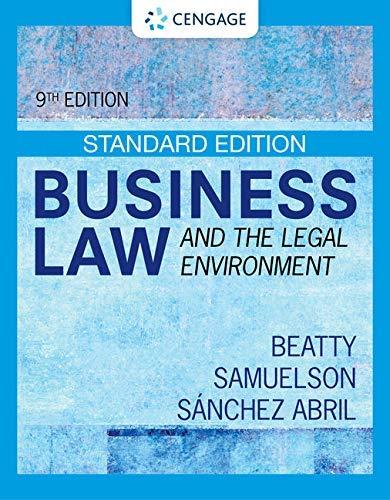Question
The following passages are from the Opinion of the Court. They continue the Court's opinion and lay out the reasons for the majority decision. Some
The following passages are from the Opinion of the Court. They continue the Court's opinion and lay out the reasons for the majority decision. Some of the passages have been edited to simplify the task at hand. In many instances we have omitted reference to the case numbers. On the other hand, we have tried to keep as much of the legal argument and apparatus intact; on the other hand, we tried to emphasize the logic at play.
Your job is to describe the reasoning involved in each passage. You can do this by illustrating the logic involved. You should look for uses of logical operators such as conjunction, disjunction, negation, and conditional statements; sufficient and necessary conditions; and the analogical reasoning involved in the Court's arguments.
In the 19th century, both before and after the ratification of the Fourteenth Amendment, many American courts reviewed damages for "partiality" or "passion and prejudice." Nevertheless, because of the difficulty of probing juror reasoning, passion and prejudice review was, in fact, review of the amount of awards. Judges would infer passion, prejudice, or partiality from the size of the award. Taylor v. Giger: "In actions of tort ... a new trial ought not to be granted for excessiveness of damages, unless the damages found are so enormous as to shew that the jury were under some improper influence, or were led astray by the violence of prejudice or passion."
Step by Step Solution
There are 3 Steps involved in it
Step: 1

Get Instant Access to Expert-Tailored Solutions
See step-by-step solutions with expert insights and AI powered tools for academic success
Step: 2

Step: 3

Ace Your Homework with AI
Get the answers you need in no time with our AI-driven, step-by-step assistance
Get Started


